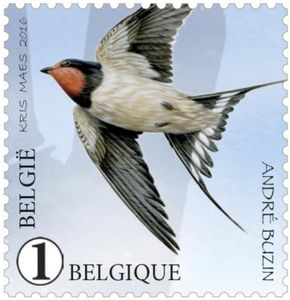Few studies have quantified the relative reproductive success of passerines in urban habitats. I studied food availability and reproductive success of barn swallows Hirundo rustica in two urban habitats during 2012–2015. Barn swallows breeding in the town center experienced lower insect densities than those in the town periphery. Lower food availability resulted in reduced feeding rates per capita, lower nestling body mass, longer nestling periods, longer inter-clutch intervals, fewer first and second brood fledglings and a lower total number of fledglings produced during the breeding season in comparison to barn swallows breeding in the town periphery.
Source: Peter Györkös Teglhøj (2017) J Avian Biol DOI: 10.1111/jav.01086
http://onlinelibrary.wiley.com/doi/10.1111/jav.01086/full

- Login om te reageren
